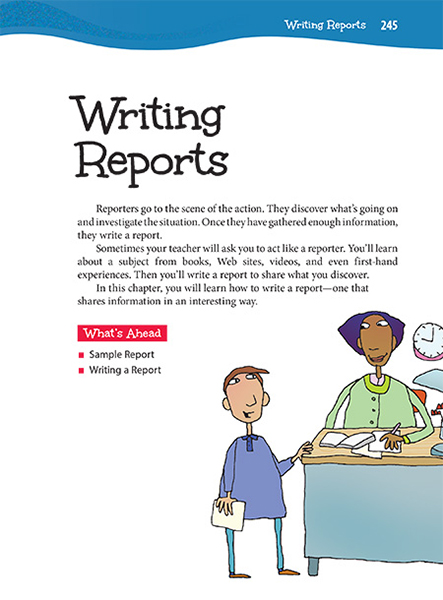Page 245 from

Start-Up Activity
Writing a report involves gathering information, so introduce the chapter by demonstrating how to find different information sources. Take your class the library and/or demonstrate how to search for reliable Internet sources. Show these strategies using a topic that will have broad appeal with your class. Then have students practice searching for information about topics of their choosing.
Stress the importance of careful note taking during this process. Students should always record where they find information (the source), including the title, author, and page number for print information and the title, author, and hyperlink for digital information.
Think About It
“The trouble with facts is that there are so many of them.”
— Samuel Crothers

Start-Up Activity
Writing a report involves gathering information, so introduce the chapter by demonstrating how to find different information sources. Take your class the library and/or demonstrate how to search for reliable Internet sources. Show these strategies using a topic that will have broad appeal with your class. Then have students practice searching for information about topics of their choosing.
Stress the importance of careful note taking during this process. Students should always record where they find information (the source), including the title, author, and page number for print information and the title, author, and hyperlink for digital information.
Think About It
“The trouble with facts is that there are so many of them.”
— Samuel Crothers
